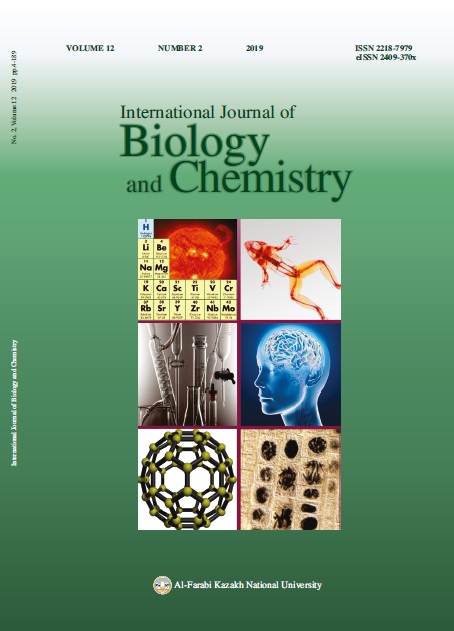Copper ammonia leaching from smelter slag
DOI:
https://doi.org/10.26577/ijbch-2019-i2-18Abstract
Copper smelter slag can be considered as an important source for using in the copper hydrometallurgy. Ammonia leaching seems to be attractive for processing copper slag. Under the influence of ammonia, copper, which is part of the minerals of copper, forms soluble ammonia complexes, while iron precipitates as insoluble compounds. In the present work, the possibility of leaching the copper smelter slag (1.26 wt.% Cu) of the Balkhash smelter using NH4OH solutions was considered. The effect of experimental factors (leaching duration, reagent concentration, temperature, stirring rate, as well as a solid-to-liquid ratio) on the extraction of copper into solution was studied. It was found that the extraction of copper into
solution increases with increasing temperature (in the studied range 298 – 333 K), pulp density (up to 10 pct) and stirring rate (up to 800 rpm). The concentration of NH4OH almost does not affect on the level of copper extraction in the range of 1-4 M. The following experimental conditions provide the recovery of 65% of Cu into ammonia solution: 1M NH4OH, T = 333 K, particle size 90% < 200 mesh, solid-to-liquid ratio 10 pct, stirring rate 800 rpm, and leaching duration 180 min, 65% of copper is extracted into the solution. Shrinking core model with mixture kinetics was used to describe the process of ammonia leaching of copper from smelter slag. The activation energy and pre-exponential factor for the reactions of copper
dissolution were calculated to be 16.2 ± 0.7 kJ/mol and 0.138 ± 0.001 min-1, respectively. The relatively low value of the activation energy indicates that the rate of the overall leaching process is controlled mainly by the processes of mass transfer rather than by the rate of chemical reactions of copper dissolution.
Downloads
How to Cite
Issue
Section
License
ааа





